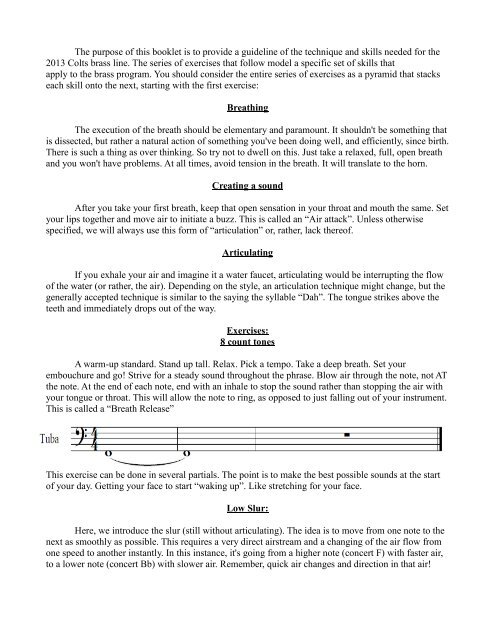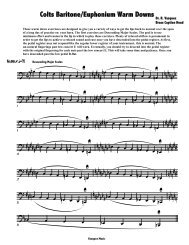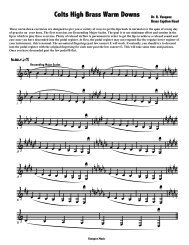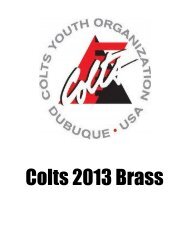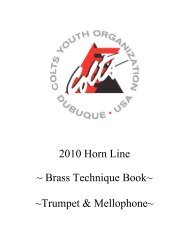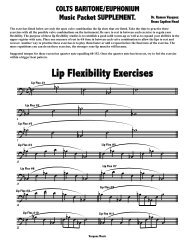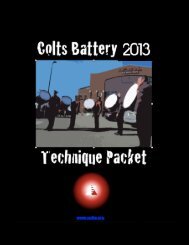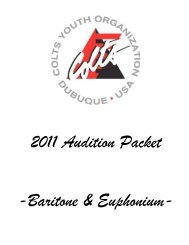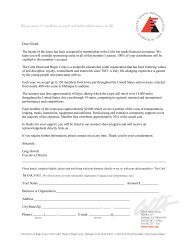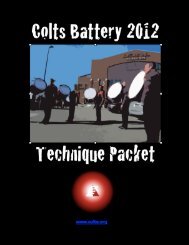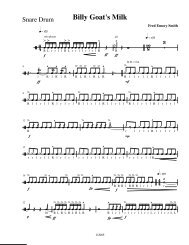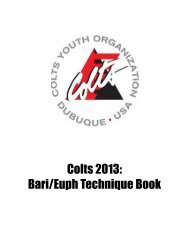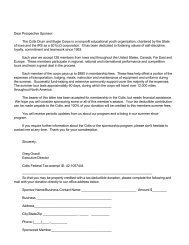You also want an ePaper? Increase the reach of your titles
YUMPU automatically turns print PDFs into web optimized ePapers that Google loves.
The purpose of this booklet is to provide a guideline of the technique and skills needed for the2013 <strong>Colts</strong> brass line. The series of exercises that follow model a specific set of skills thatapply to the brass program. You should consider the entire series of exercises as a pyramid that stackseach skill onto the next, starting with the first exercise:BreathingThe execution of the breath should be elementary and paramount. It shouldn't be something thatis dissected, but rather a natural action of something you've been doing well, and efficiently, since birth.There is such a thing as over thinking. So try not to dwell on this. Just take a relaxed, full, open breathand you won't have problems. At all times, avoid tension in the breath. It will translate to the horn.Creating a soundAfter you take your first breath, keep that open sensation in your throat and mouth the same. Setyour lips together and move air to initiate a buzz. This is called an “Air attack”. Unless otherwisespecified, we will always use this form of “articulation” or, rather, lack thereof.ArticulatingIf you exhale your air and imagine it a water faucet, articulating would be interrupting the flowof the water (or rather, the air). Depending on the style, an articulation technique might change, but thegenerally accepted technique is similar to the saying the syllable “Dah”. The tongue strikes above theteeth and immediately drops out of the way.Exercises:8 count tonesA warm-up standard. Stand up tall. Relax. Pick a tempo. Take a deep breath. Set yourembouchure and go! Strive for a steady sound throughout the phrase. Blow air through the note, not ATthe note. At the end of each note, end with an inhale to stop the sound rather than stopping the air withyour tongue or throat. This will allow the note to ring, as opposed to just falling out of your instrument.This is called a “Breath Release”This exercise can be done in several partials. The point is to make the best possible sounds at the startof your day. Getting your face to start “waking up”. Like stretching for your face.Low Slur:Here, we introduce the slur (still without articulating). The idea is to move from one note to thenext as smoothly as possible. This requires a very direct airstream and a changing of the air flow fromone speed to another instantly. In this instance, it's going from a higher note (concert F) with faster air,to a lower note (concert Bb) with slower air. Remember, quick air changes and direction in that air!


